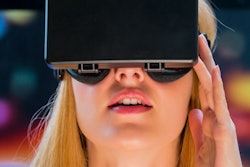Dental students at King's College London are practicing their skills with a new 3D virtual reality jaw device, according to an article by the BBC.
The device, called HapTEL (haptics in technology-enhanced learning), helps students learn how much pressure to apply when drilling through haptics, or tactile feedback technology. In a virtual environment, the technology enables the user to sense touch and feel, the BBC reported.
Technical developers from the University of Reading and Birmingham City University have teamed with dentists from Guy's Hospital and e-learning professionals from King's College to harness the technology originating from the gaming industry, according to the article.
Students, wearing glasses that make the image of a jaw on a monitor screen appear 3D, can feel the difference between hard enamel and the soft tissue of a decayed tooth. The image of the jaw moves in relation to the position of the student's head. Panels on the glasses work in conjunction with a head tracking camera to simulate the experience of viewing teeth from different angles.
When students complete a task, a playback feature enables them to review the work they've done along with reports of how much decayed versus healthy virtual tissue they've drilled, according to the article.
There is also a substantial savings potential. One device costs about $16,000 while a mannequin head chair can cost as much as $64,000. There are plans to apply the technology to simulating crown preparations and syringe insertion, the article noted.



















